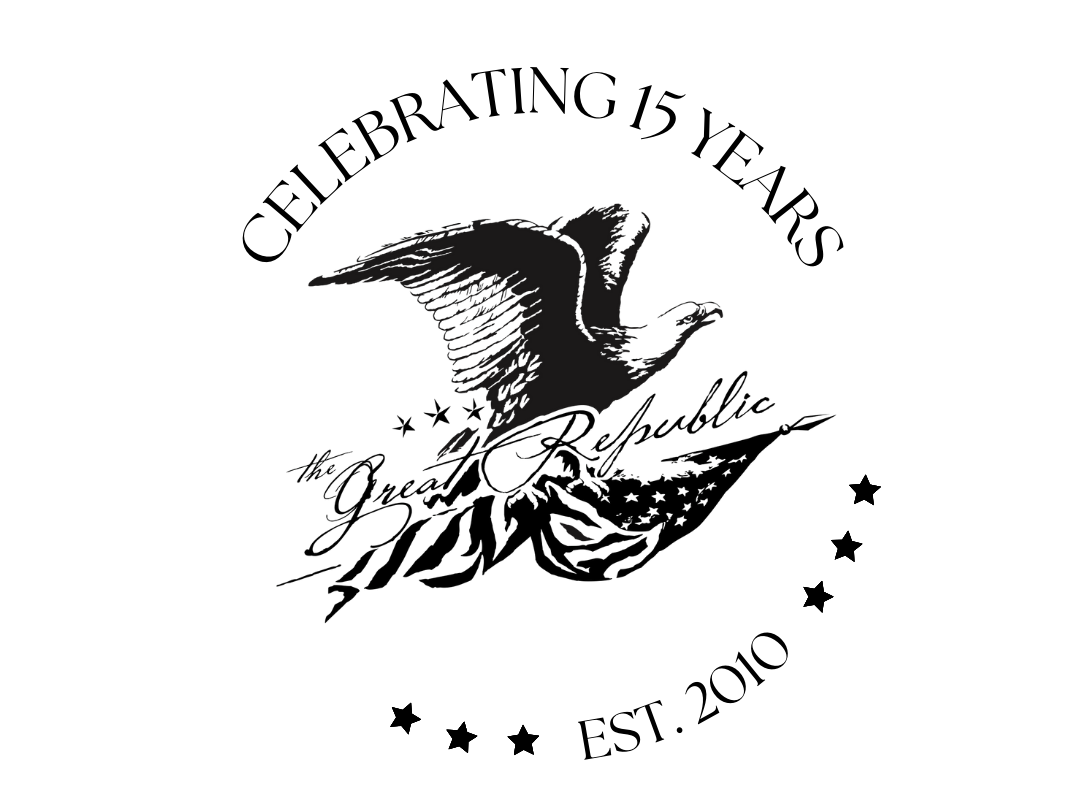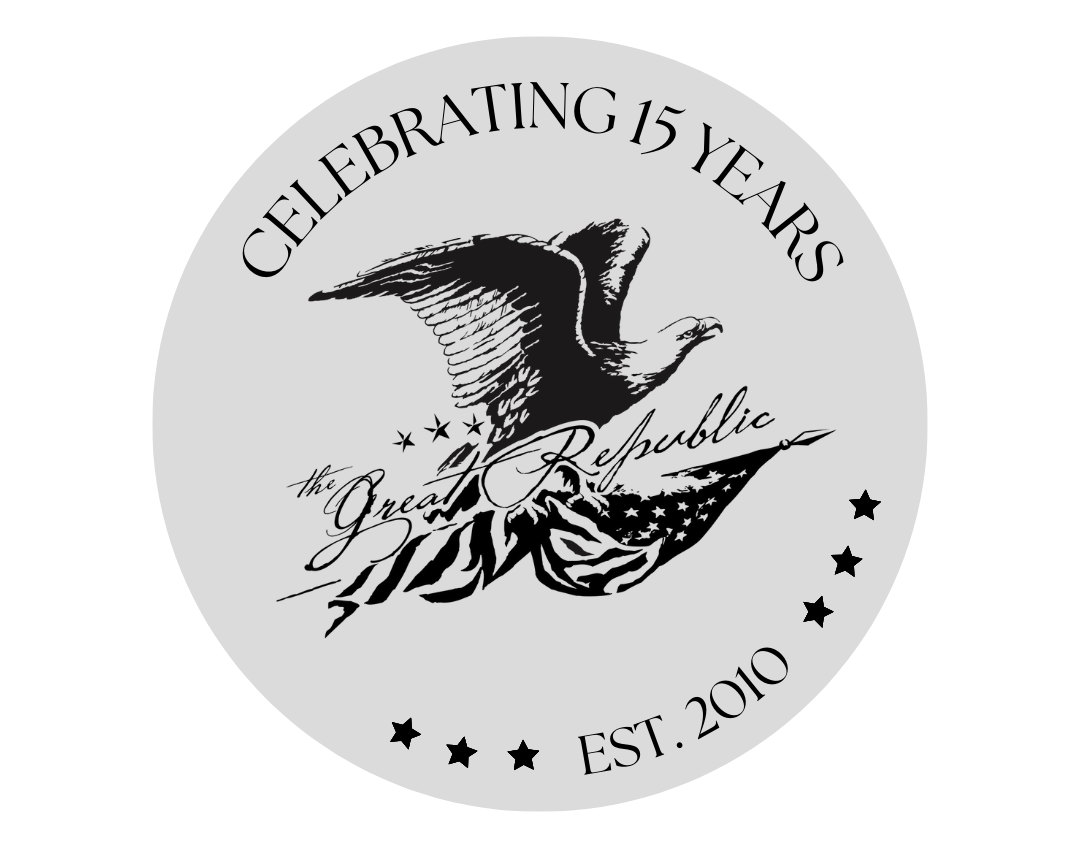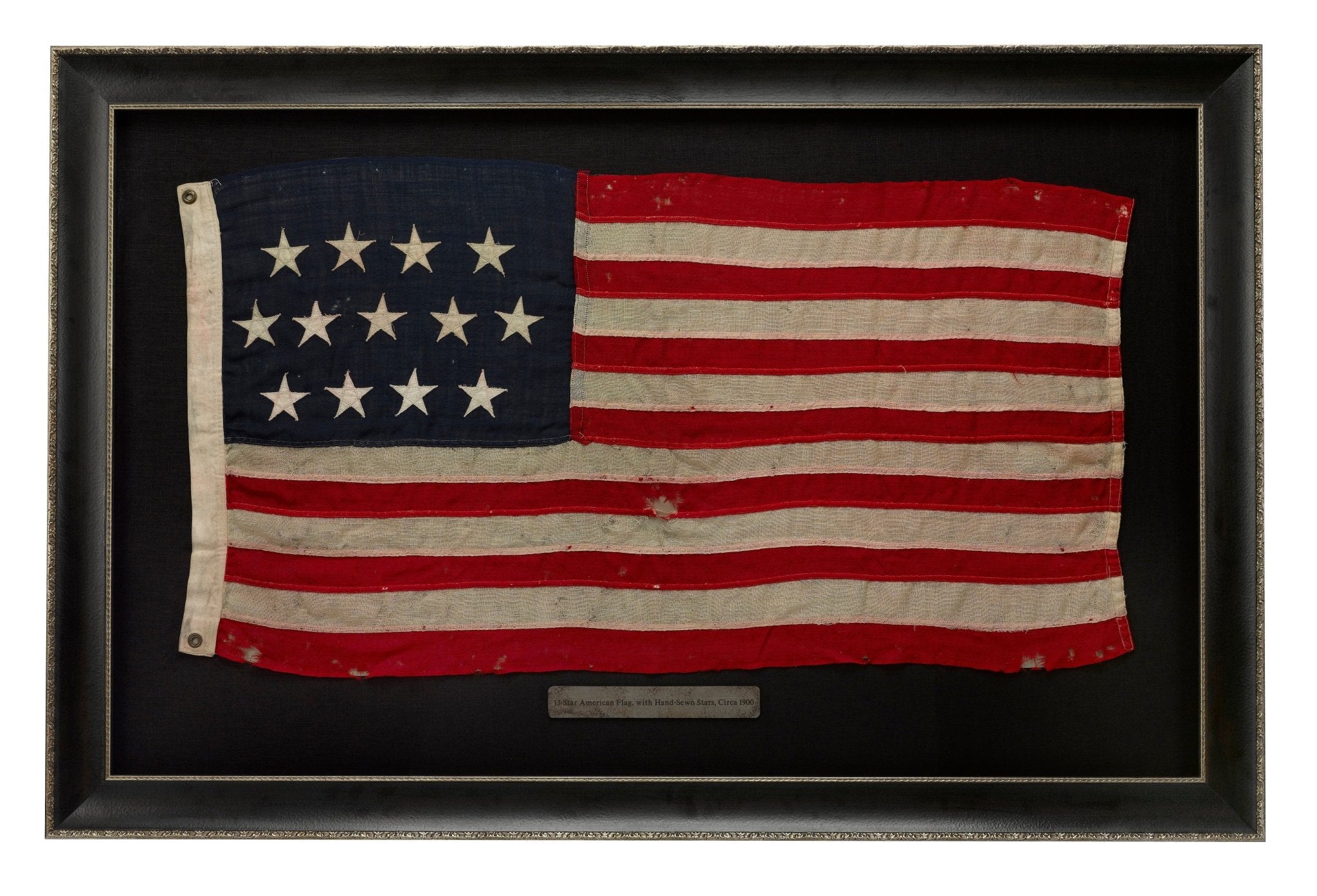
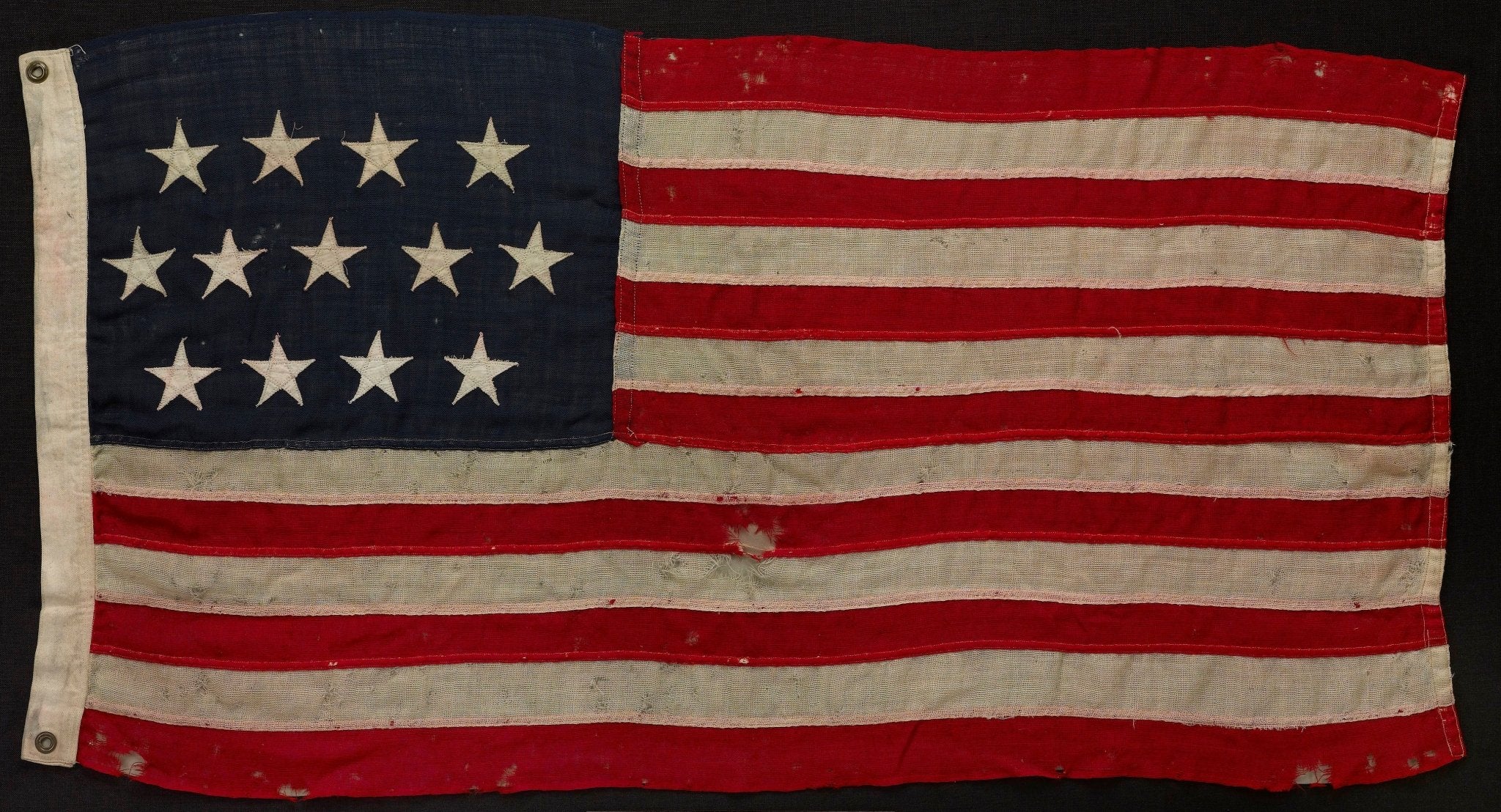


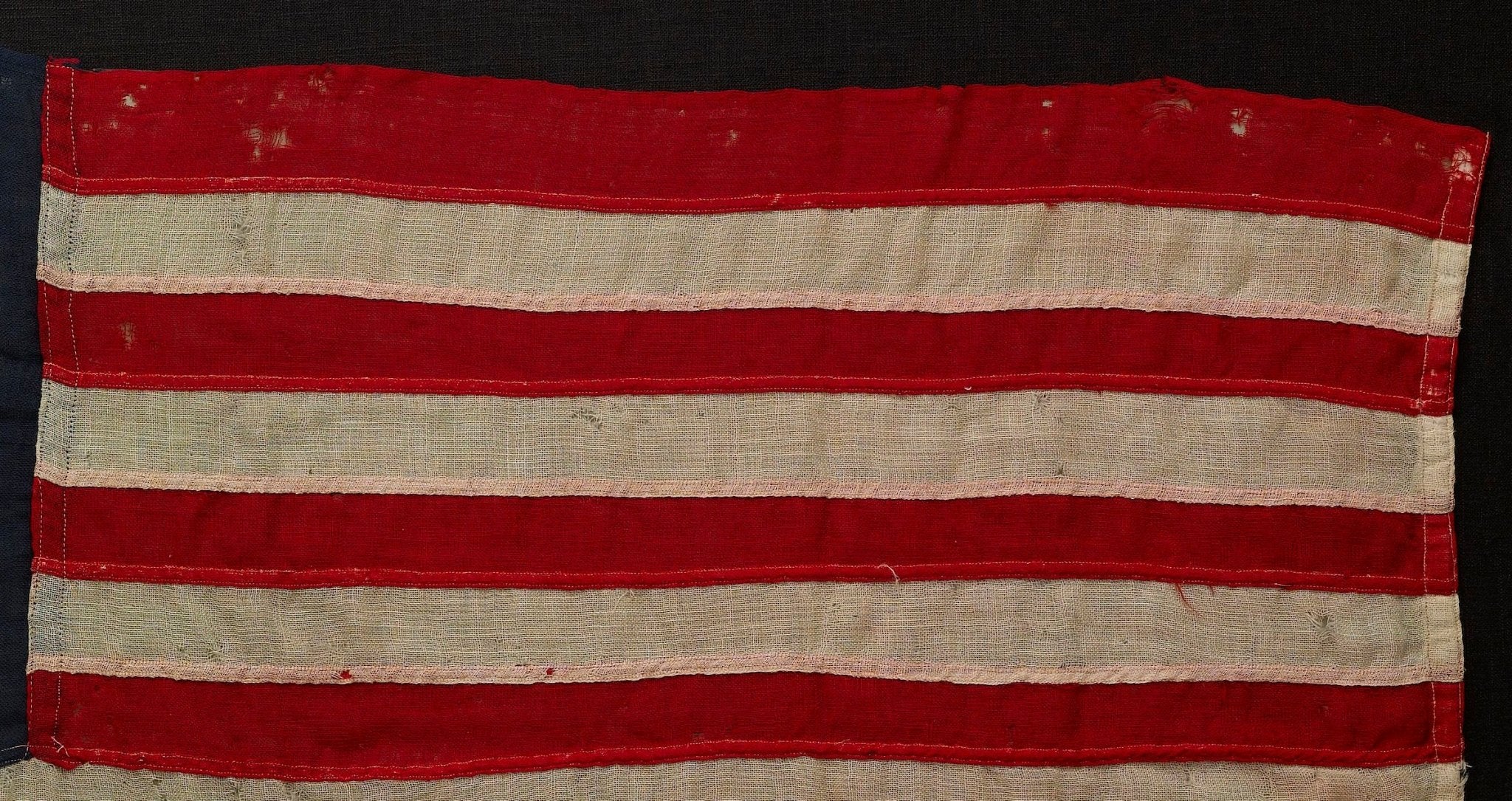
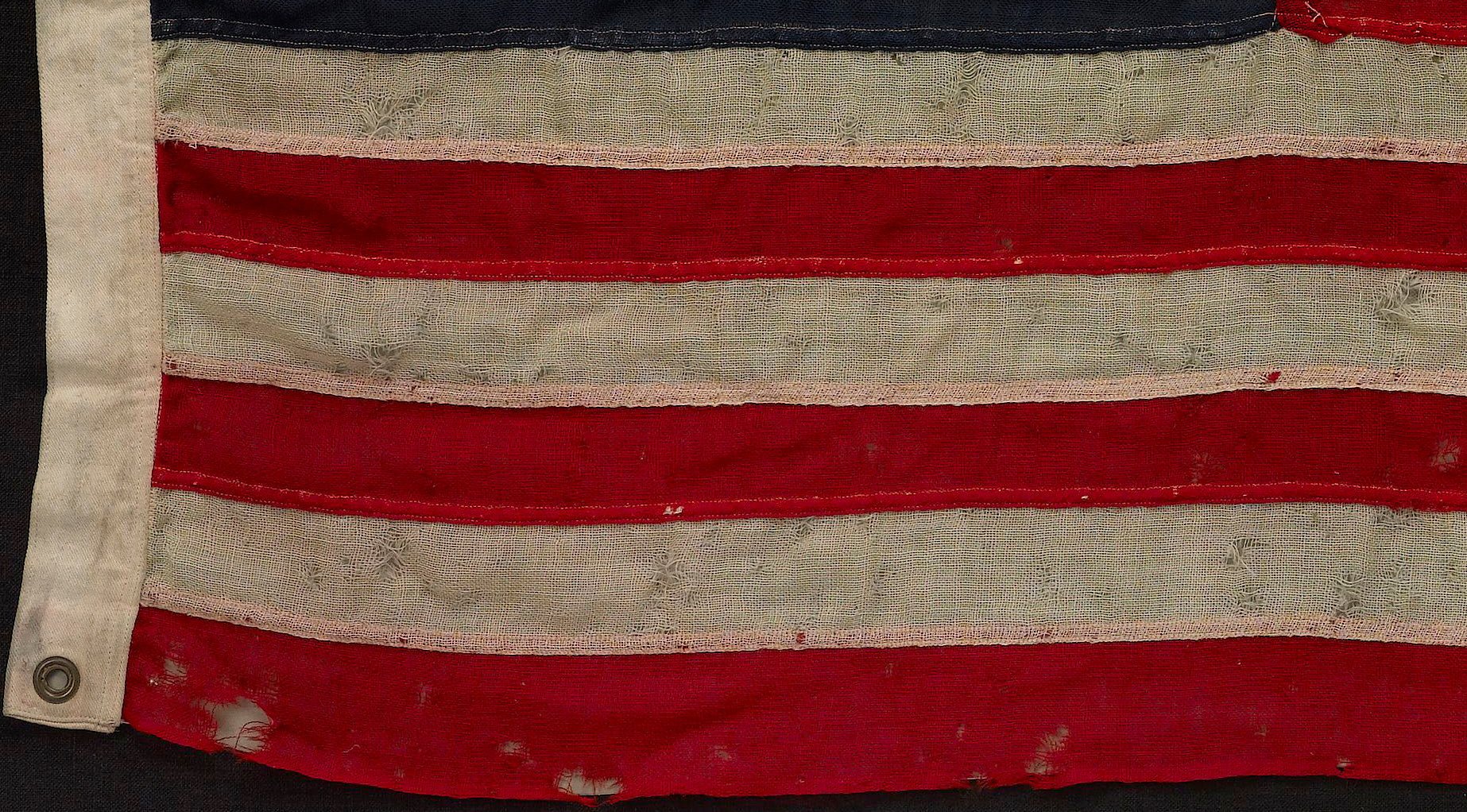
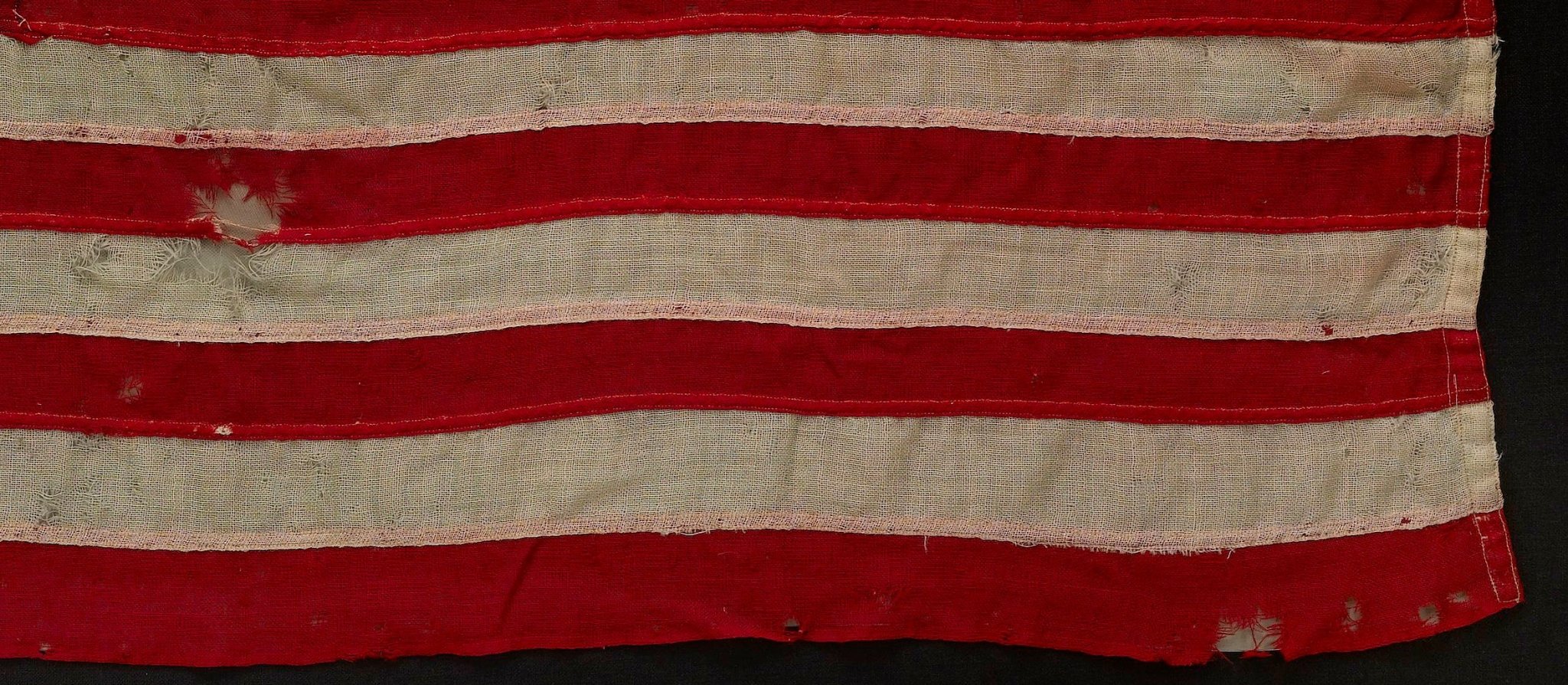
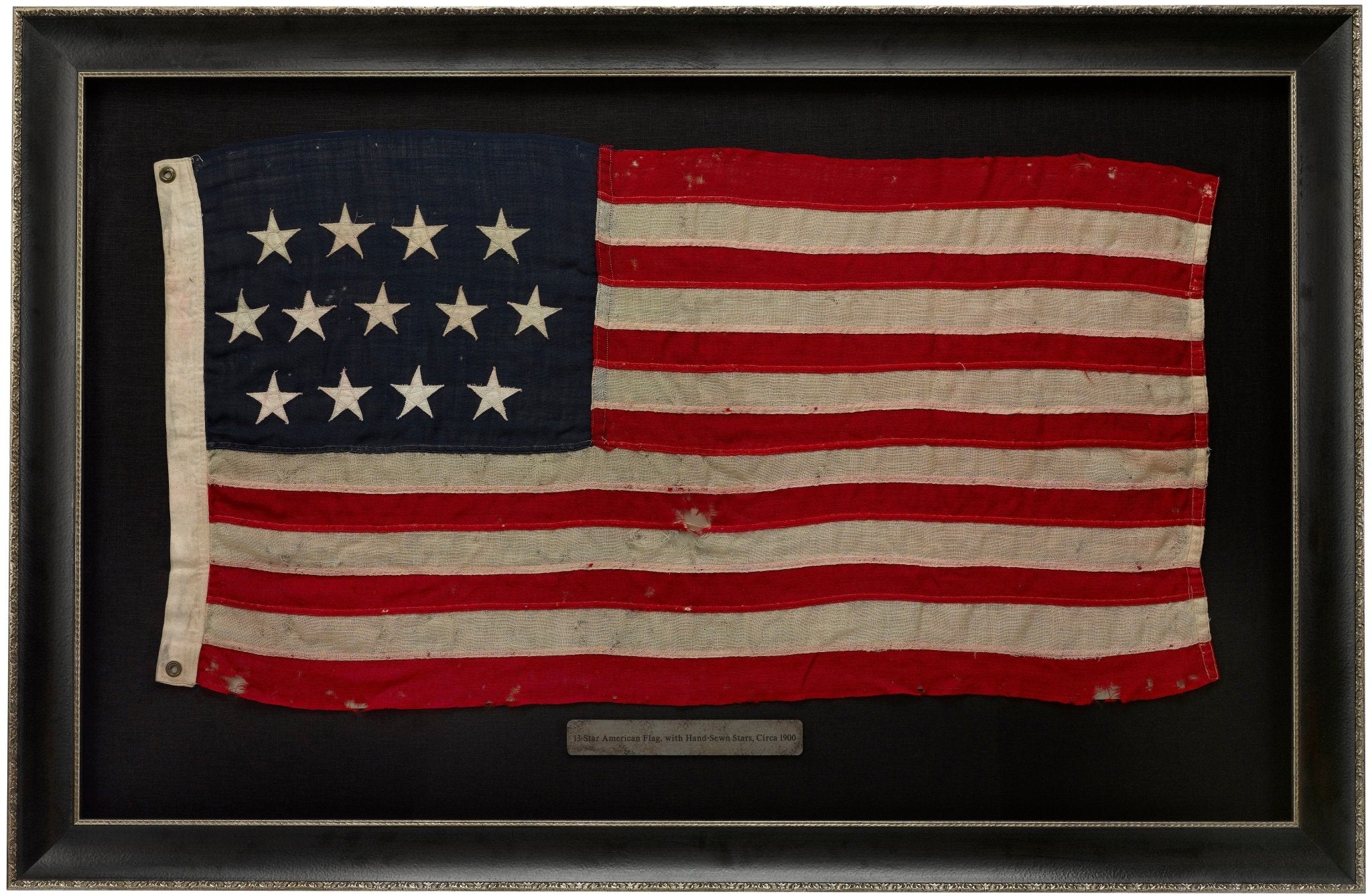
13-Star Wool American Flag, with Hand-Sewn Stars, Circa 1900
This is a beautiful 13-star American flag, each star hand-sewn with zig-zag stitching. The wool flag was sewn at the turn of the century, circa 1900. The flag features 13 white stars resting on a dark blue canton, with thirteen red and white alternating stripes completing the design. The stars are arranged rigidly, with tips aligned, presented in a rare 4-5-4 configuration.
The original use of the 13-star flag dates to June 14th, 1777, each star representing a state in the new Union. But 13-star flags have been used throughout our Nation's history for a variety of purposes. The U.S. Navy used the 13-star count on small boats, not only in the 18th century, but also throughout much or all of the 19th century, particularly the second half. The practice ended in 1916 following an executive order from President Woodrow Wilson. Some private ships also used 13-star flags during the same period as the Navy, and the use of yachting ensigns with a wreath of 13 stars surrounding an anchor still persists today. Among other uses, 13-star flags were carried by soldiers during the Mexican and Civil Wars, and were used at patriotic events, including Lafayette's visit in 1825-26, the celebration of the Nation's Centennial in 1876, and the Sesquicentennial in 1926.
This flag was sewn with a zig-zag stitching. On February 23, 1892, Mr. Henry Bowman, an African American, was awarded patent #469,395, Device for Making Flags, in which he patented the use of zig-zag stitching specifically for sewing stars onto American flags. As Bowman’s patent describes, the approach was to sew the white fabric blanks to each side of the canton, using zig-zag stitching, and to then cut away the blanks and leave the stars. Although this was not the most efficient use of raw materials, the method was a significant improvement in speed versus cutting stars separately. The rough edges of the stars were more secure with the zig-zag stitching. This can also leave them looking coarser than a carefully turned-under star.
One of the most compelling features of this example is its exceptionally rare 4-5-4 star configuration, a star layout seldom encountered among surviving 13-star flags. While roughly 75% of antique 13-star flags appear in the familiar 3-2-3-2-3 “Hopkinson” pattern, and the other 20% in a medallion arrangement, only about 5% of 13-star flags boast more unusual designs, like this elusive 4-5-4 pattern. Flags with this configuration are widely regarded as some of the most difficult to locate. They are also among the most visually striking, their balanced yet bold geometry sets them apart from more ubiquitous patterns produced in the late 19th and 20th centuries.
Historically, this design has meaningful precedent. The hand-sewn ensign of the Revolutionary privateer Minerva, believed to be the only named privateer ensign to survive and once part of the renowned Mastai collection, had a 4-5-4 star layout. This horizontal arrangement was favored by some ships in the Navy, privateers, merchant vessels, and even coastal forts and lighthouses, including the famous Sandy Hook lighthouse, because its straight lines made the flag’s nationality easier to discern at sea. Another celebrated 4-5-4 formation example is the early Federal period 13-star merchant ensign from the collection of noted historian William H. Gunthman. Because the Flag Act of 1777 prescribed no official star pattern and the original federal flag does not survive, these early surviving examples and period engravings have led several experts to suggest that the 4-5-4 configuration may represent one of the earliest and most authentic configurations used in the young republic.
The 4-5-4 configuration also occasionally dates to 13-star flags from the Civil War era, with two attractive examples documented in the private collection of Dr. Peter Keim, but is seldom seen on flags made for the 1876 Centennial or even in the 1890-1920 production boom, when this flag was made. This rarity, combined with its historical references, makes all 4-5-4 star patterns especially desirable among collectors.
CONDITION:
Good condition overall. 13-star American flag, circa 1900. Wool. Hand-sewn construction with thirteen zig-zag appliquéd stars. Canvas hoist with two brass grommets, at top and bottom. Color is vibrant and white is clean, with some light toning as expected with age and past use, Small scattered holes. Flag Dimensions: 22 1/2" H x 43 1/2" W.
Mounted in an archival, custom frame with acid-free black linen mats, UV plexiglas, and a custom-built wooden frame.
Framed Dimensions: 37 3/8"H x 57"W x 2 1/4"D.
REFERENCES:
Zaricor Flag Collection, “First Flag Act 1777: 13 Stars, Revolution & Early Federal Period,” #ZFC0707 and #ZFC0419.
Heritage Auctions, “13 Star US Flag, Four-Five-Four Star Pattern Design with a Large Center Star, Early Federal Period,” November 13, 2023, LOT #43004 .
Kevin Keim & Peter Keim, A Grand Old Flag: A History of the United States Through Its Flags (2007), 35.
Accompanied by our company's letter of authenticity.
Pickup available at Colorado
Usually ready in 4 hours

13-Star Wool American Flag, with Hand-Sewn Stars, Circa 1900
Colorado
1 Lake Avenue
Colorado Springs CO 80906
United States
Choose options








Frequently Asked Questions
FAQs
Yes, all of our Antiques are certified authentic. Every antique comes with a signed Letter of Authenticity that details the item’s history, its current condition including any conservation, binding, or framing work, and the item’s provenance. The Letters of Authenticity are priced valuations by our authentication specialists, who assure that items are original and unconditionally guaranteed as genuine for life.
We pack and ship your items from our gallery in Colorado Springs. You may also choose to come pick up your order. Antique items are carefully packed and insured during shipping. The shipping price will be calculated at checkout.
We acquire from a variety of trusted sources all over the world, but mostly through auctions and private collections within the United States. All provenance information will be listed on the Letter of
Authenticity accompanying your purchase.
